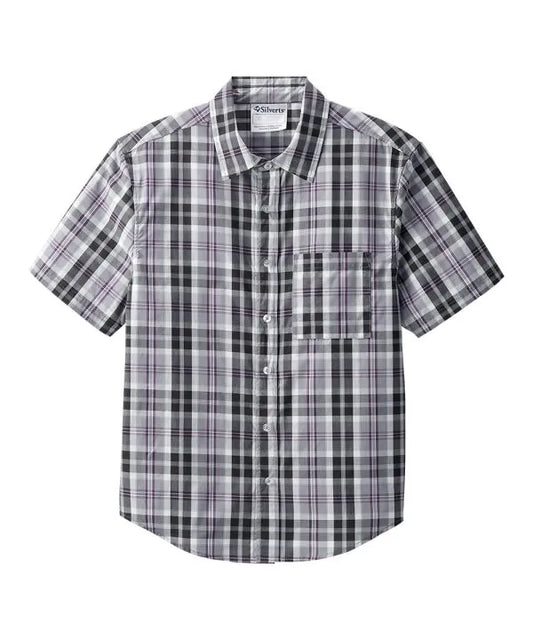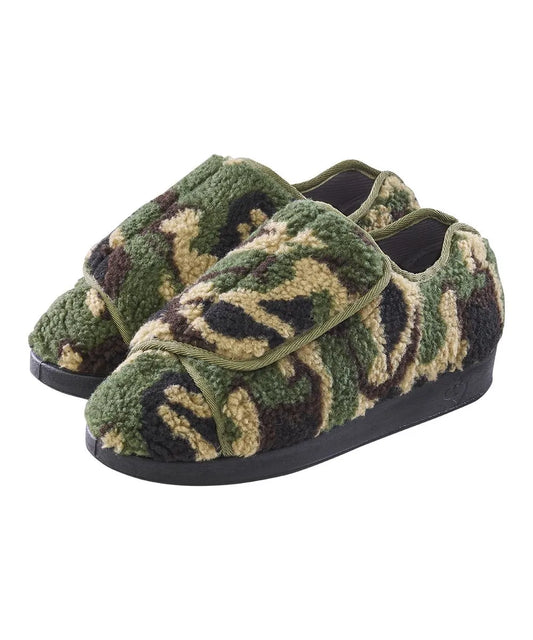Written By: Kate Cruess
Have you ever tried zipping up your shirt with one hand? Or doing up a button that just won’t go in? Limited dexterity, such as in arthritis, stroke recovery, cerebral palsy or multiple sclerosis, can make the simplest tasks of your everyday life a huge struggle (Ability Central, 2024).
This is something that you don’t really think about until you cannot do it anymore. Limited dexterity in terms of these conditions is considered losing fine motor skills that are helpful for a lot of everyday tasks- dressing being a major one (Ability Central, 2024). Not only does this affect your ability, but it also impacts autonomy and that feeling of independence.
Adaptive clothing could be the key to getting this feeling of independence back and to taking back control over your everyday tasks that matter to you! June Adaptive is an example of a brand that prioritizes this independence and ensures style the whole way. We will discuss the most effective ways to dress with limited dexterity.
Best Clothing Fasteners For Weak Grip Strength
Velcro isn’t exactly what someone may picture when wanting to keep adaptive clothing glamorous, but there are modern adaptive clothing companies that have been able to make it almost invisible. Instead of bulky velcro, these companies have incorporated hook and loop fasteners that are pretty much invisible, and still ensure your clothing is appropriately fastened.
Another adaptive clothing feature that targets weak grip strength is having grip tabs on the sides of pants that allow you to easily grab onto them and pull them up with much less effort than just gripping onto the pants. One of my favorites from June Adaptive is the Women’s Pants with Easy Grip Pull. These pants look like everyday pants but have these easy grips on each side so you can pull them up and down with minimal effort.

These features help dressing to be faster, easier and independent while still looking stylish!
Tools That Help With Buttons And Zippers
Adaptive tools come into play when you want to wear a specific outfit, but it contains those buttons or zippers that just make dressing a struggle, so you put it aside and pick a different outfit. You shouldn’t have to do this, and with adaptive tools, you don’t!
Zipper pulls are tools that are inserted into a zipper and give you something larger to grab onto and pull (Dressing Aids, 2023). Traditional zippers are small and can be extremely hard to use with limited dexterity, but zipper pulls can be attached to any clothing with a zipper and make them much easier to pull, even with one hand (Dressing Aids, 2023).
Button hooks are very similar. They are threaded through the hole and looped around the button to allow it to be pulled through (Dressing Aids, 2023). This one small tool can save so much time and frustration, and is truly remarkable.
However, not every solution needs to involve buying something from a store! You could simply loop a key ring or a shoelace through a zipper to have something bigger to grip onto, or use a hair elastic as a button loop. These tools can make adaptive dressing easier without having to buy something.
Now these tools are great, but what’s even better is when adaptive clothing brands get rid of the need for the tools by adapting the clothing to your needs. Adaptive clothing that builds into the solutions and removes the need for tools is the real game changer, which leads into our next topic!
Why Magnetic Closures Are Revolutionizing Adaptive Wear
Like I just mentioned, these magnetic closures are revolutionary to adaptive clothing. They involve no fumbling around with zippers or buttons, no pain, and no challenge, just independence. These magnets are sewn right into the fabric, and instead of having to snap the buttons or do up the zipper, they easily align and hold throughout the day. This adaptation works amazingly for people with Arthritis, Parkinson’s, Stroke recovery, One-handed dressing, and much more. On top of all of this, you aren’t sacrificing style by wearing these clothes. You wouldn’t even know the magnets exist!
An example of this is magnetic zippers that take away the hassle of getting the zipper to line up perfectly and zip it up. June Adaptive has a Women’s Magnetic Zipper Hoodie that looks like an ordinary zip-up hoodie, but doesn’t require the hassle of zipping up the sweater. With the magnetic zipper, this clothing doesn’t sacrifice style, but can take away that frustration and bring back the independence of being able to put on your clothing with ease.

June Adaptive’s Men’s Long Sleeve Shirt with Magnetic Buttons is a great example of magnets in action as well. This shirt looks like a classic button-up dress shirt, but removes the challenge of the buttons by including magnetic buttons. All you need to do is line up the shirt edges, and these buttons snap together.

I remember watching my grandma struggle to dress with Parkinson’s disease. I didn’t understand the effect of limited dexterity on an everyday task like getting changed- something that everyone needs to be able to do. She would struggle to change each and every day, but the day she got a shirt with magnetic buttons, I watched her life change. She couldn’t believe how easy it was for her. This moment stuck with me. The freedom to change on her own was empowering, and I could tell it brought back a sense of independence to her life. This change that may seem small to some people can be life-changing for someone with limited dexterity.
Dressing Techniques For One-Handed Use
One-handed dressing can feel especially difficult and intimidating when you experience one-sided weakness, paralysis or amputation. However, with the appropriate adaptive clothing, it can become much more manageable!
Here are some techniques for this process:
-
Lying clothes out flat on a bed or any flat surface can be extremely helpful. It helps to easily slip into them without having to attempt to flatten them out while putting them on from a bunched-up shirt or pants.
-
Dressing the affected side first has been found to be a lot more helpful, as you can use the unaffected side to dress the affected side, which makes it easier and saves time and then dress that unaffected side next (Edwards, 2023).
-
Leave shirts/blouse cuffs fastened when they aren’t on if they are wide enough. This can save the struggle of trying to do them up when putting them on (Edwards, 2023).
-
Wear front fastening bras as they are easier to put on and you can see the fastener (Edwards, 2023).
-
Fasten the top button of your bottoms before attempting to pull up the zipper. This makes it easier to pull up the zipper (Edwards, 2023).
-
Use magnetic zippers or button clothing or zippers with loops (Edwards, 2023). This can take away the struggle of doing up a zipper or button!
-
Sitting while dressing can help you maintain balance and control over your dressing. A dressing aid stick can also be extremely helpful for someone with one hand. It helps to retrieve clothing and position them when putting them on (Edwards, 2023).
Final Thoughts
Adaptive clothing is about bringing back the independence that someone should feel when dressing, and making this everyday task not feel so daunting, without sacrificing style. For people with limited dexterity, dressing may feel like a daily obstacle course, but it shouldn’t. Each tool I mentioned, and each piece of adaptive clothing, represents freedom and empowerment. Whether it’s zipper pulls, button hooks, magnetic zippers and buttons or easy grips, each and every one can make a huge difference in someone’s life.
June Adaptive is an example of a brand that puts function and autonomy at the forefront of fashion. They represent that accessibility when it comes to clothing doesn’t mean that style can’t exist. It gives people back that sense of control over their own lives. Whether someone is dealing with arthritis, multiple sclerosis, cerebral palsy or recovering from a stroke, adaptive clothing can meet their needs, and this can mean everything to them. Watching someone realize they can finally put on a piece of clothing with absolutely no help is inspiring and emotional, because it isn’t just about that piece of clothing; it’s about their independence and having control over their life.
Adaptive clothing reminds us that inclusion doesn’t mean having to give something up. It’s about being innovative and creative while making something that meets people's needs. This is something that June Adaptive embodies. They change the way that we think about accessibility and design. They put pressure on brands to be more inclusive and thoughtful when it comes to fashion. It reminds us that these things you may find small to you can be part of a much bigger picture in someone else’s life.
Please subscribe to the newsletter below for more content from June Adaptive.















